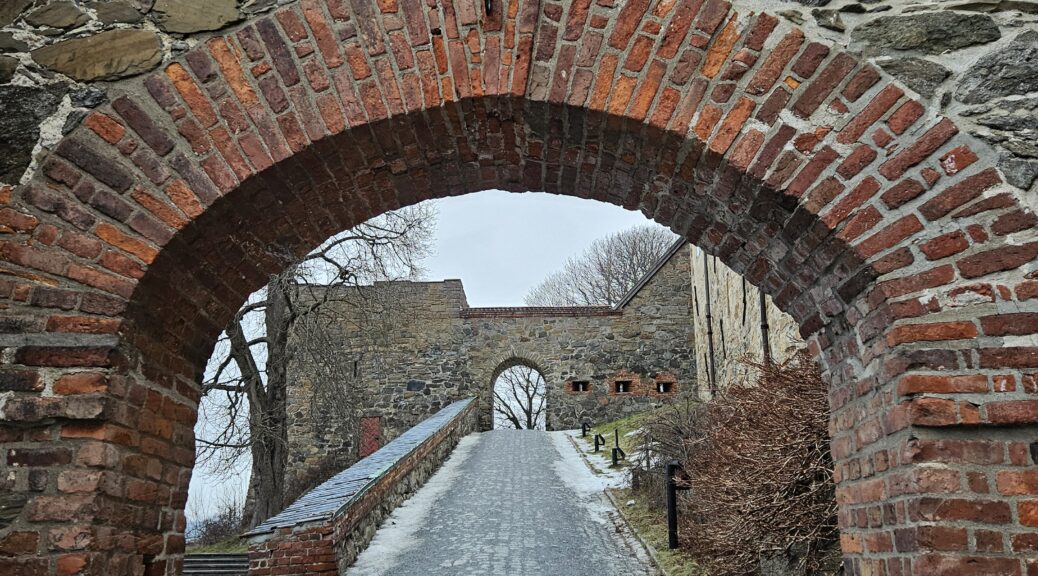
Museums, castles and galleries
Everywhere we went I made sure that we received an appropriate dose of history. The museum visits tended to have a focus on the Vikings; after all, I wanted to see first hand some of the relics which I had read about!.
However, we also enjoyed other historical sites and collections with their amazing stories.
It all started with a visit to the Swedish History Museum in Stockholm. It was here, in The Viking World exhibition, that I saw the silver cap adornments from Grave BJ581 at Birka in Sweden. I was very excited! (Read more about this in one of my earlier posts).
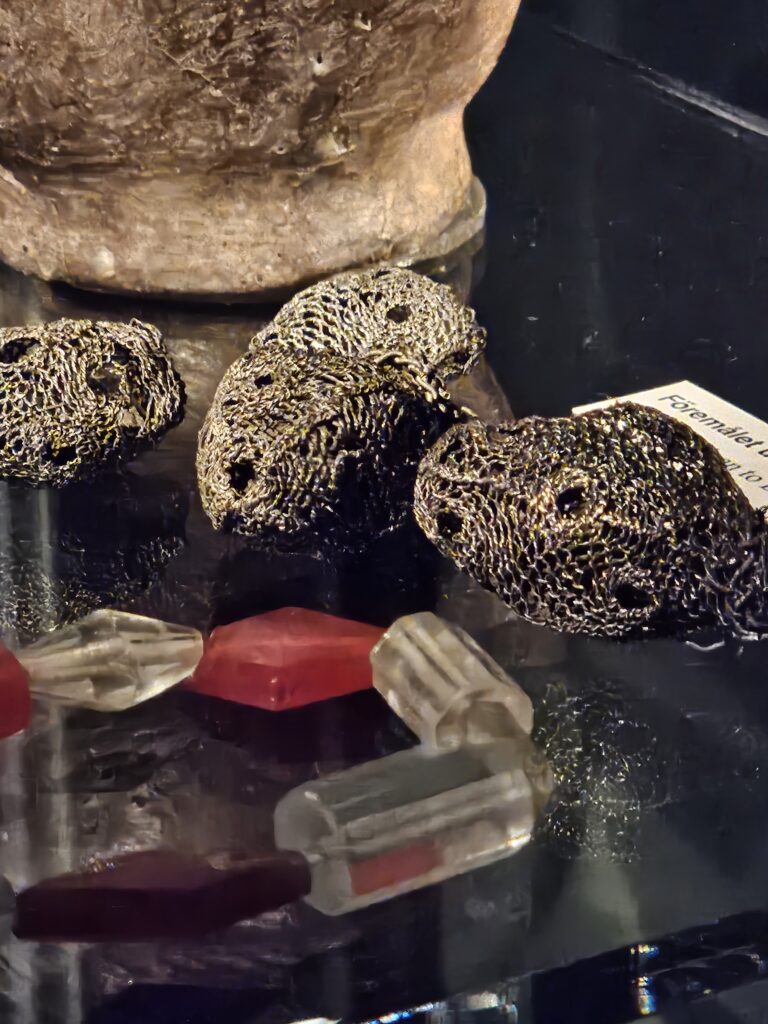

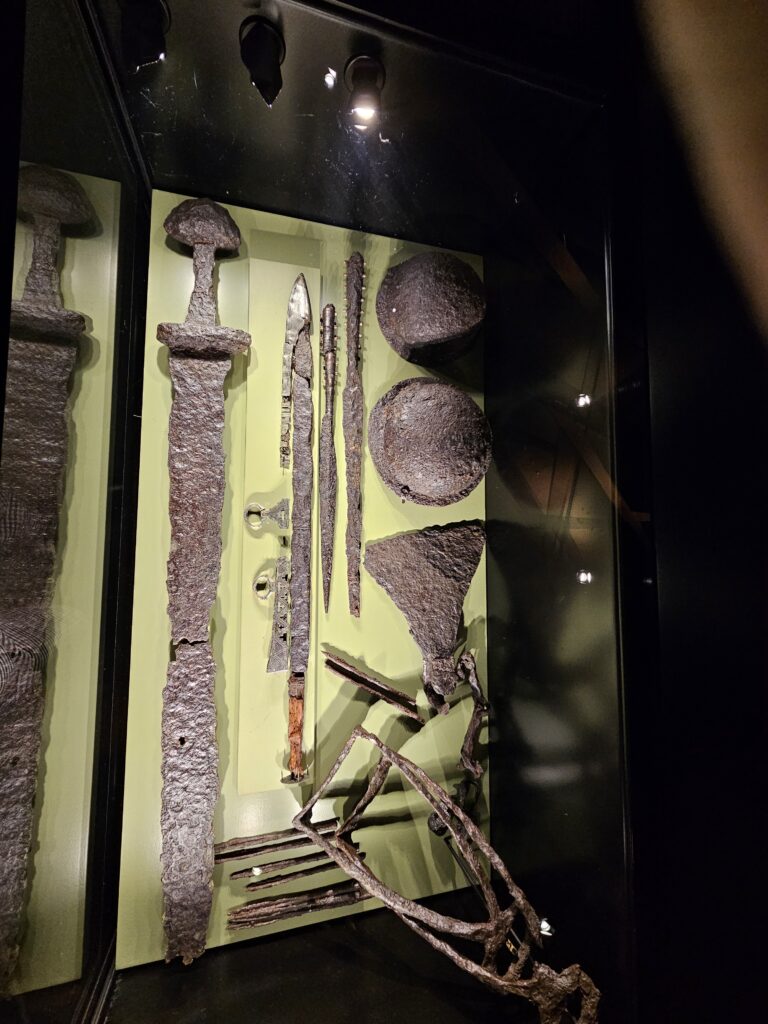
This museum also houses an astounding collection of gold relics in The Gold Room. The collection of prehistoric gold and silver includes an extraordinary store of Viking gold. Some of it is believed to be caches of Danegeld (such as the one paid by the King of France to save Paris from siege in 845 CE, mentioned in my post here) which was sometimes buried, never retrieved, and then later unearthed.
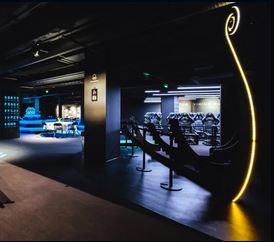
A more unusual Viking museum was The Viking Planet in Oslo, where the exhibits were almost entirely interactive. This included a simulation of a Viking attack, where we were on the ship as it conducted one of its raids. And holograms of Viking villagers. As touristy as it was, we had a lot of fun, wandering around the exhibits, letting the technology do all the work in delivering the history to us.
Also in Oslo, we visited Akershus Castle, a fortress believed to have been built by King Hakon V Magnusson in the late thirteenth century to defend the city from attacks (mainly from Swedish forces). Over the years it has also been used as a residential palace, a prison, and is still used by the armed forces today, even though it contains a number of museums. When we visited it was quite early in the morning and there was no one around, just the guards, which accentuated the military atmosphere created by their presence.
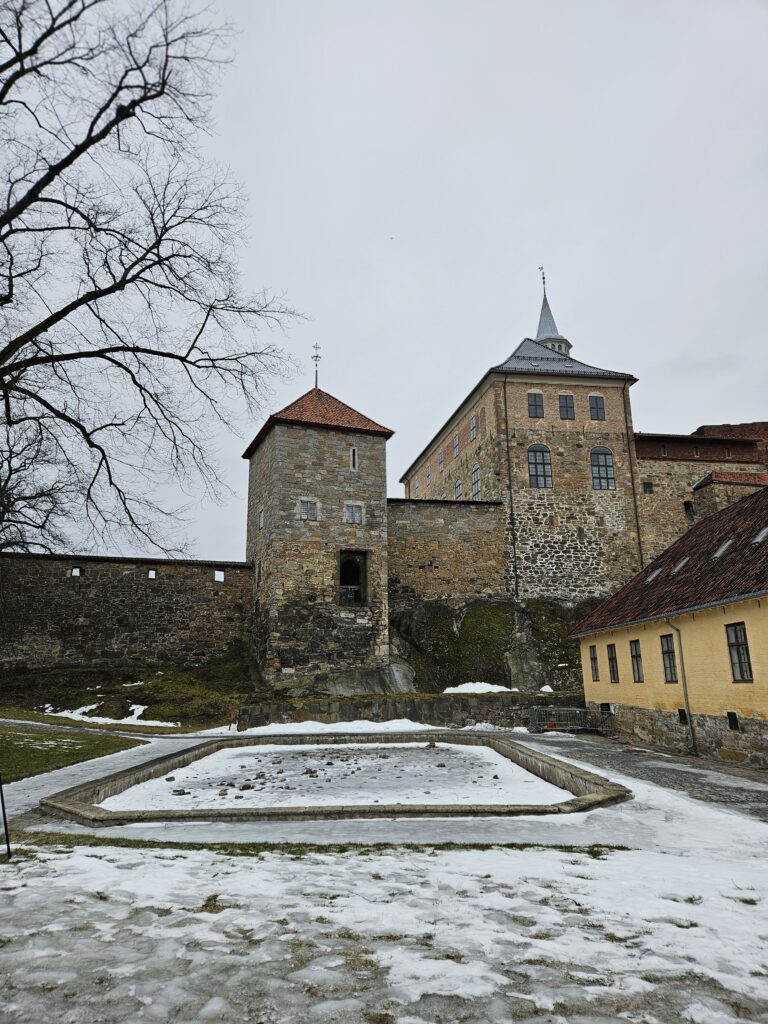
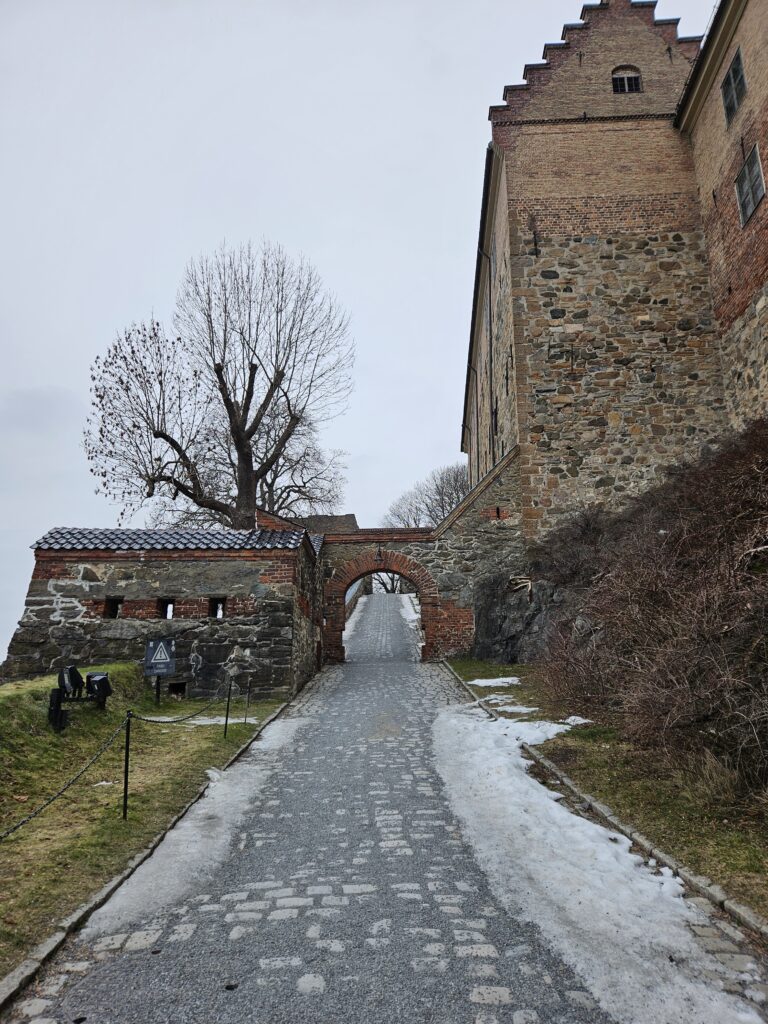
We had a busy time in Oslo insofar as historical/educational activities….
…the Nobel Peace Center was fascinating. Some interesting facts:
- Alfred Nobel was Swedish, born in Stockholm in 1833, and a descendent of a famous Swedish family of scientists
- Alfred Nobel patented the nitroglycerine-based explosive dynamite in 1867, and grew his wealth from the practical application and development of his inventions.
- It is believed that his long relationship with peace activist Bertha von Suttner inspired the establishment of the Nobel Peace Prize
- In addition to providing funds for the Peace Prize, Nobel’s will provided for the financing of annual honorary awards to be made in the fields of physics, chemistry, medicine or physiology and literature.
- The prizes in the sciences and literature are awarded by Swedish bodies. However, it has long been a mystery why Nobel, of Swedish origin, should dictate that the Peace Prize be awarded by the Norwegian supreme legislature.
- Nobel’s relatives contested the will. The Swedish government and King Oscar II also became involved in the various negotiations the will generated.
- So, it was not until December 1901, five years after Nobel’s death, that the first prize was awarded.
- The Nobel medal itself is cast in gold, with engravings which have remained the same since the first medal was awarded. On one side is an image of Alfred Nobel. On the other side is an image of three naked men holding each other around their shoulders, to symbolize peace and brotherhood among nations, as originally specified by the Norwegian Nobel Committee.
The Fotografiska in Stockholm is a gallery of photographic art. It was unexpectedly amazing. There were a few exhibitions on. One was a collection of giant closeup photographs of people’s faces. Quite amazing and confronting at the same time. The level of detail was unbelievable. Another exhibition was of space photography; where photographs were composed of images related to space, such as planets, or space travel infrastructure. Then there was the space home, which was an imagined home in space where you could look out the wind and see other space homes floating by, with stars and planets in the background. There was also a section of artists who presented series of works on a particular theme or topic. One was shining a light on Nasa’s discrimination of LGBTQI individuals. All in all, an amazing gallery.
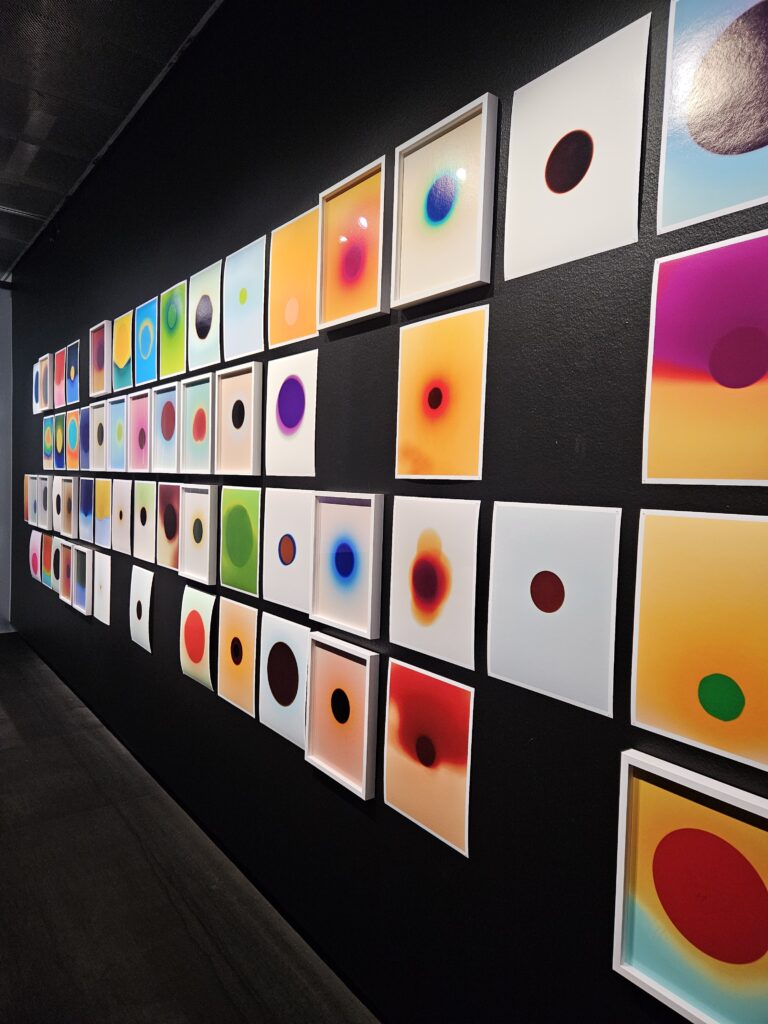
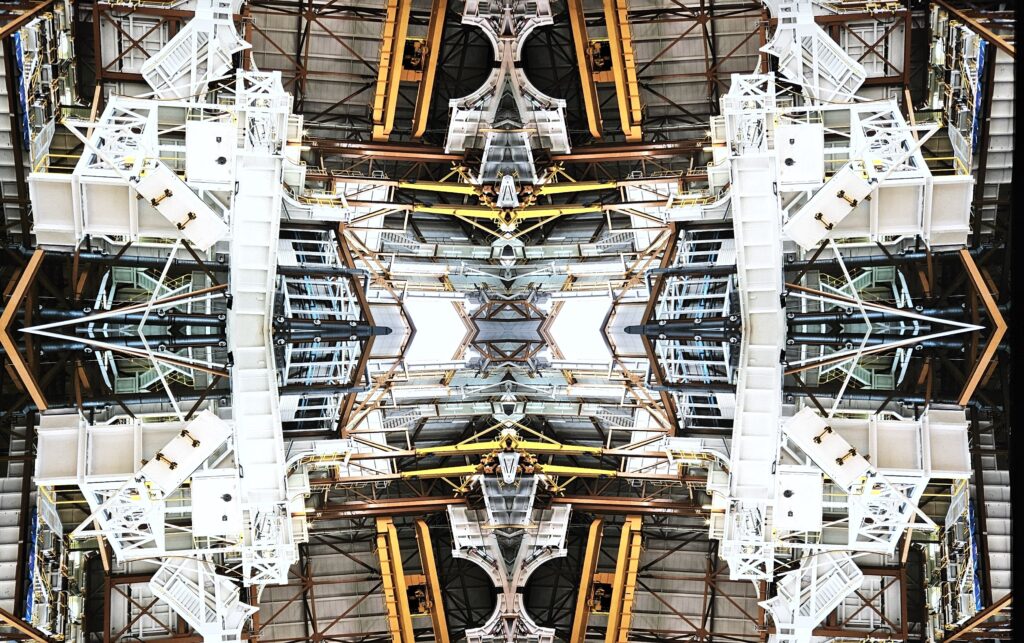
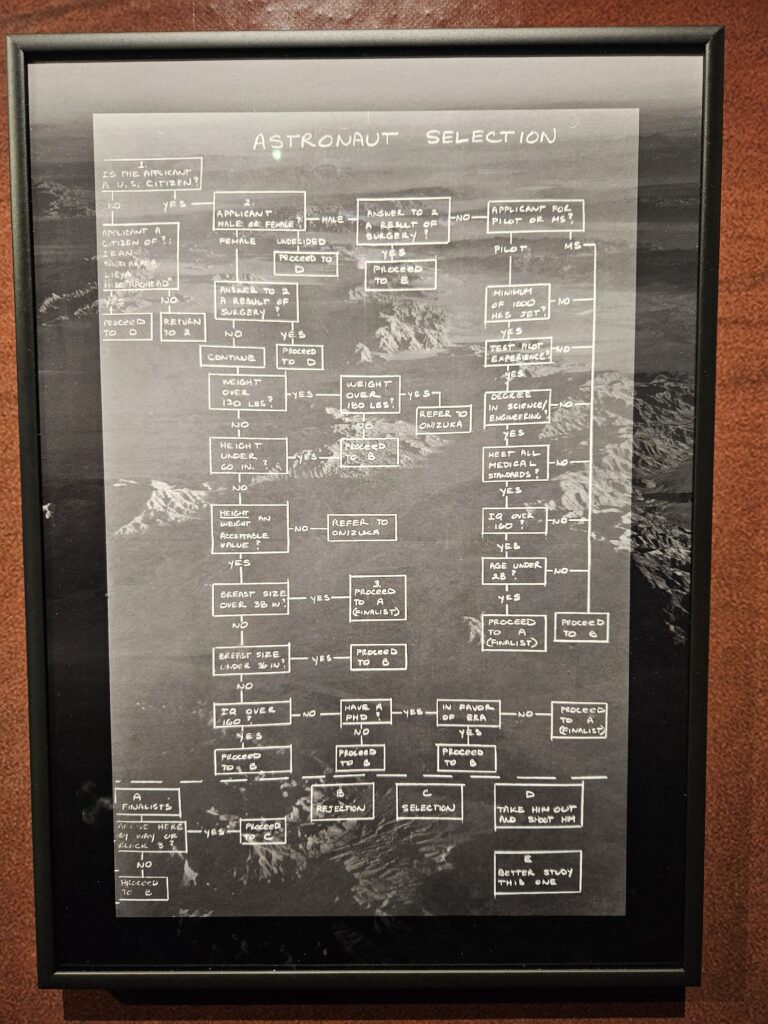
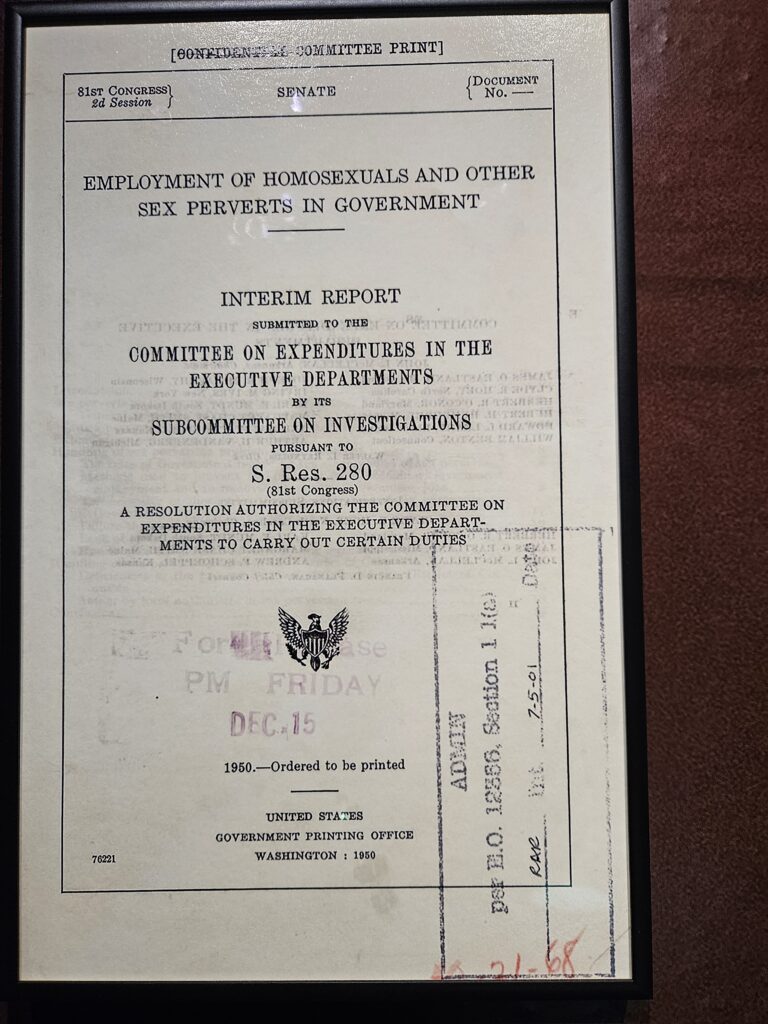
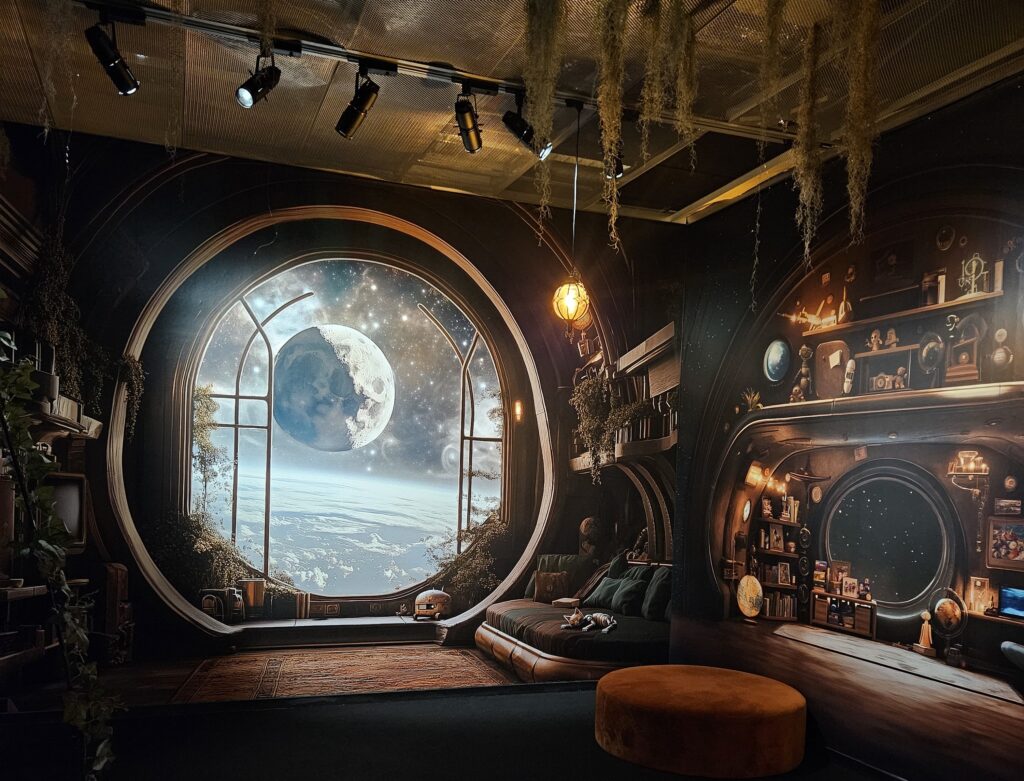
As we travelled out of the major cities, we continued to visit historical sites. The following stood out.
Trondheim was one of our early stops on our voyage up the Norwegian coast from Bergen to Kirkenes, and it was about a 25 mins walk to the Nidaros Cathedral. We spent a little while wandering around inside this wondrous building. The ceiling, stain glass, and stone carvings were truly amazing. It’s just a shame that you can’t help remembering that all this was achieved in medieval times when the population was suffering and the church had the money and power to alleviate some of the suffering. Instead the church (all of them) inflicted more pain and suffering.
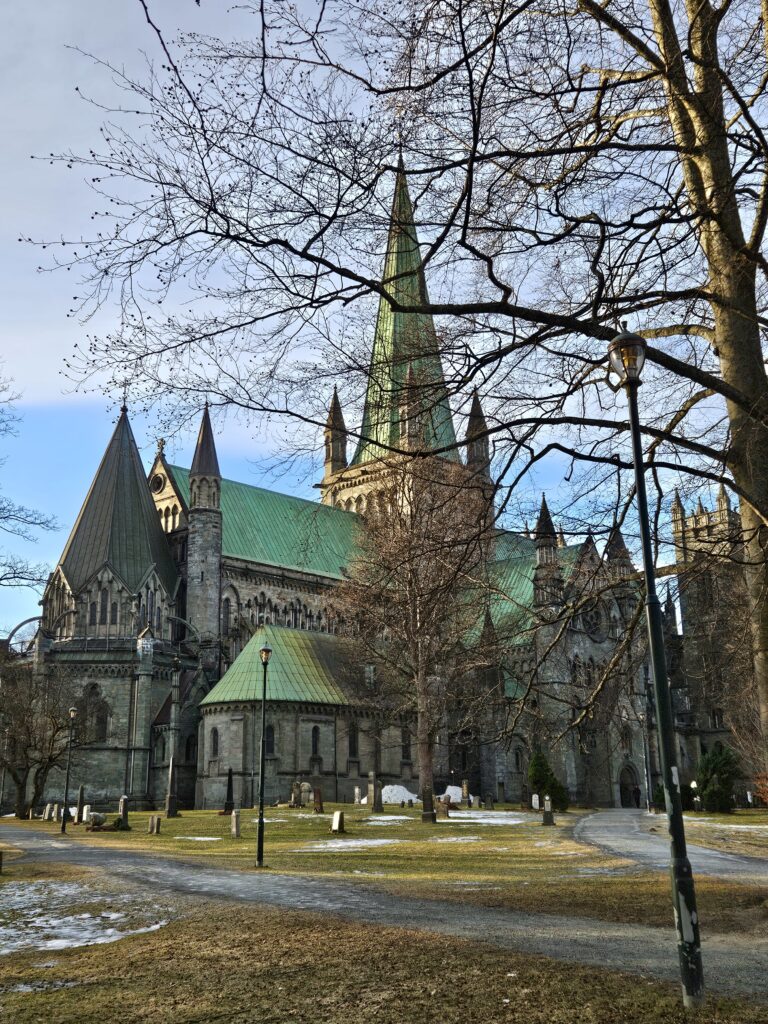
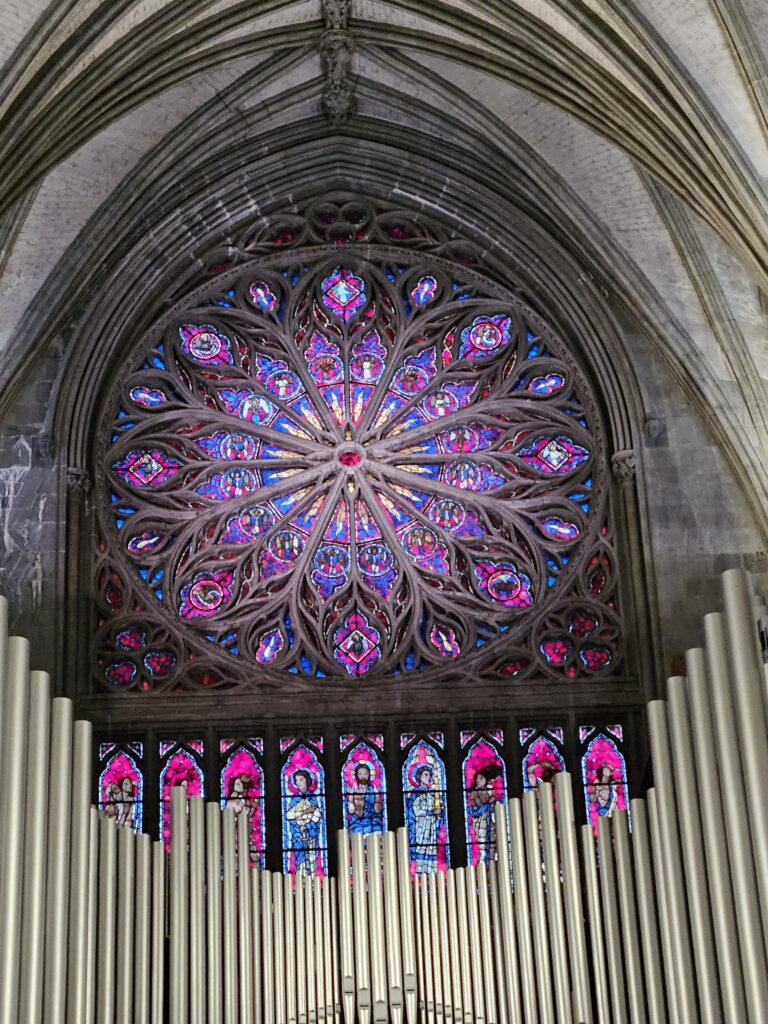
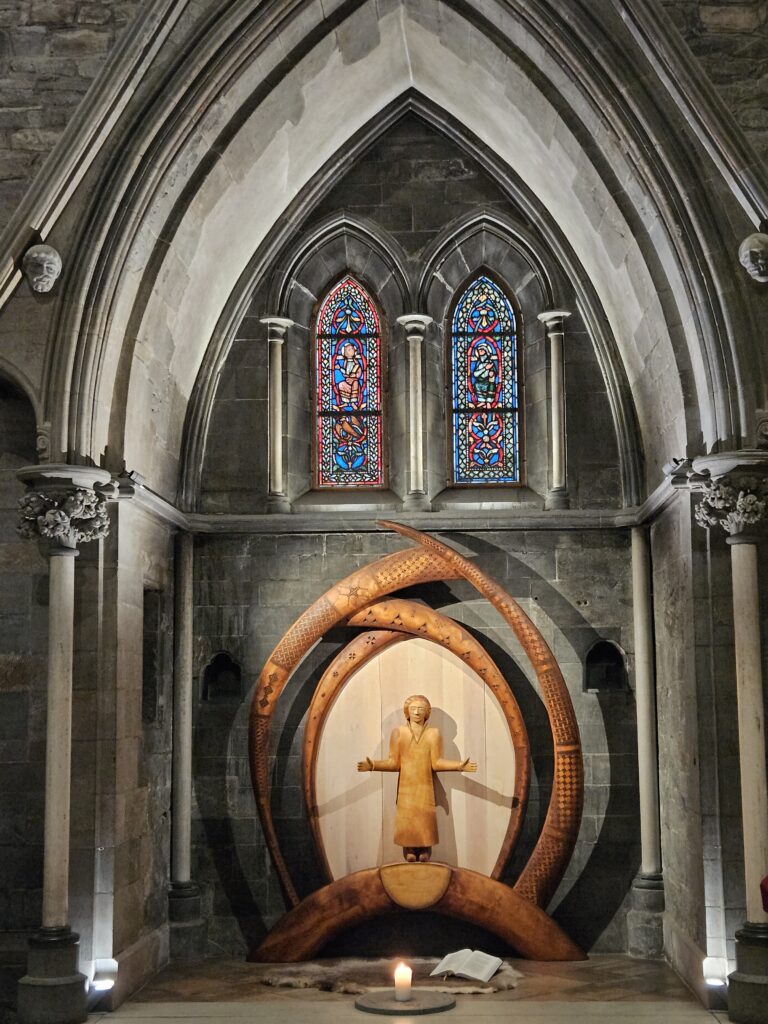
We also went down into the crypt where there was an exhibition of gravestones which were found around the cathedral and which related to the 12th century and later. They were quite fascinating and included some runic descriptions, as well as intricate carvings of images and designs.
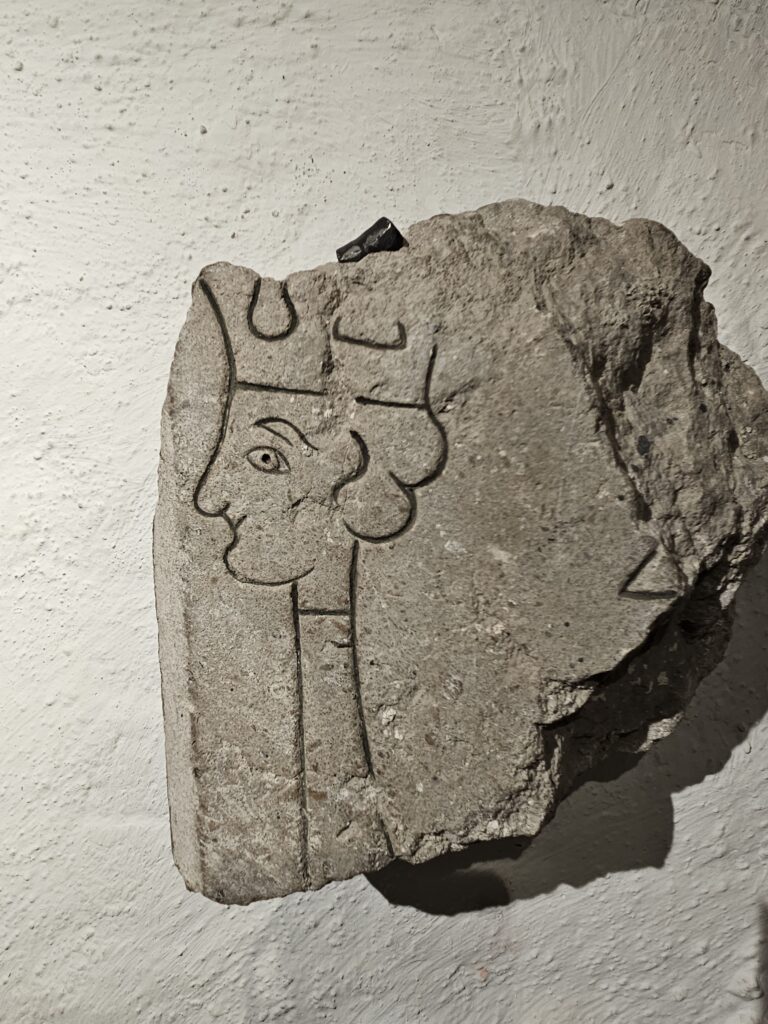
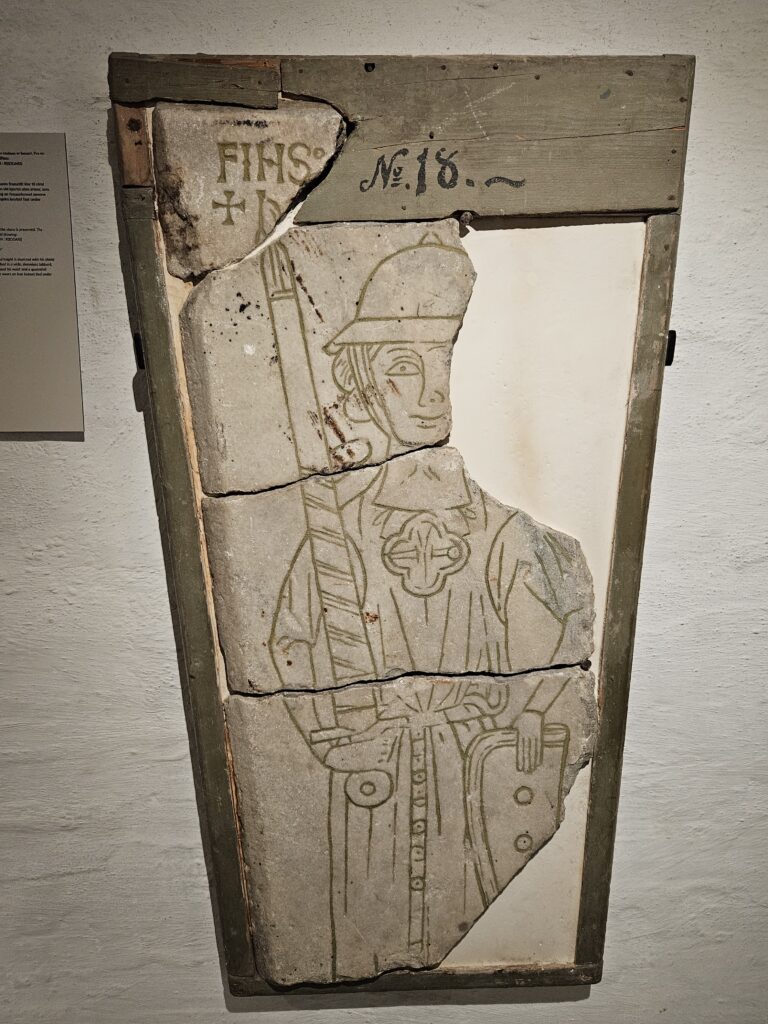
After the Cathedral we wandered to the Old Town Bridge which was built in 1681 (although it had undergone changes since then). It was spectacularly cold and windy on the bridge!
We next two museums we visited, in different towns along the coast, were totally different from each other. The Polar Museum in Tromso was presented as a leading museum of arctic history, and it did indeed have an extraordinary number of exhibits and historical items. However, the sheer volume of information, and the large number of visitors, made it less enjoyable for me. Some of the information did resonate with me because of the research I’d done for both the Antarctic and Arctic trips. Especially about Amundsen and the Fram. (I saw the Fram in Oslo). There were also exhibits about Wanny Wolstad, the female trapper in Svalbard. So, it brought back fond memories of my time in Longyearbyen. A lot of the museum was about hunting and trapping, though. This was quite distressing, and I just walked past a lot of these exhibits. In the end, there was so much information that it was overwhelming. So we didn’t spend that long there.
The next arctic museum was a complete contrast. We had stopped in Honningsvag, and were supposed to go on an excursion to the North Cape. However, this was cancelled due to bad weather. So we wandered around this small town and discovered the Nordkappmuseet. It is a small museum, with fascinating information about the history of the area. The WWII relics were particularly interesting. It was so much better than the museum in Tromso, which was jammed packed with too much information to make it overwhelming to digest. On the other hand, this little museum had just the right amount of data presented in such a way that I found myself lingering at each of the exhibits. It was particularly interesting to read about the history of the area from the early days of hunting, as well as the beginnings of the tourist industry. There were also exhibits from the start of the fish processing industry in the area. And some information about the indigenous inhabitants, their clothing and some of their customs. All in all, I left the museum feeling relaxed, informed and even inspired, after a leisurely time viewing the historical exhibits and local art.
This work of art was described as follows:

“Research is ever-moving and driven by restlessness, as in the Norwegian name for a hanging mobile, uro.
There is something we do not know.
Curiosity moves us.
When research and artist meet, we find we ask the same questions.
Blind alleys and detours.
Complexity and diversity.
New questions are stirred up.
We make new connections.”
What a gem!
And what an appropriate way to finish this post… with a fond memory which stays with me still.